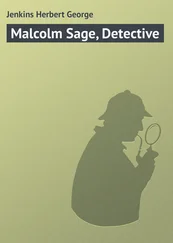The critical distance r c(or sometimes called the reverberation radius) is defined as the distance from the sound source where the direct field and reverberant field contributions to p 2 rmsare equal:
(3.79) 
thus,
(3.80) 
Figure 3.23gives a plot of Eq. (3.78)(the so‐called room equation).
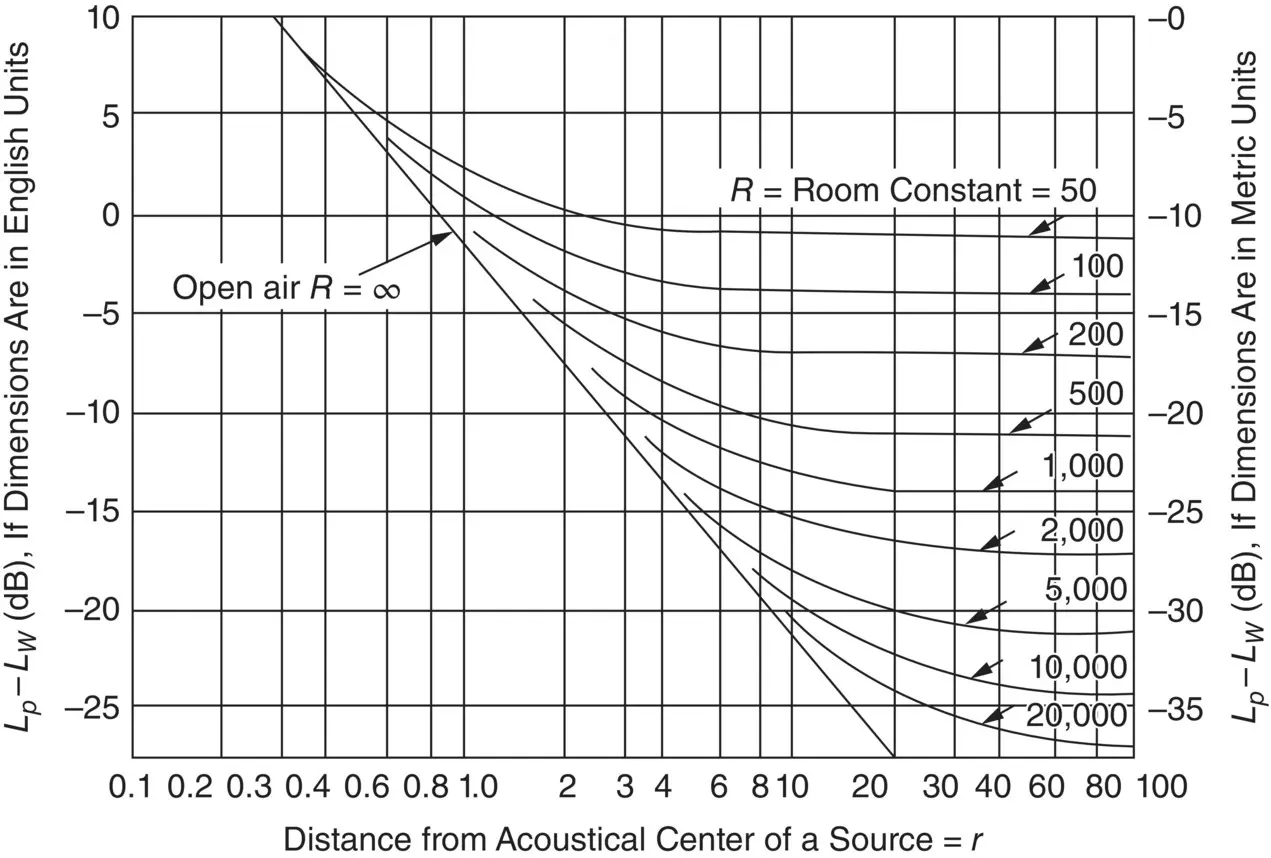
Figure 3.23 Sound pressure level in a room (relative to sound power level) as a function of distance r from sound source.
If we are situated in the reverberant field, we may show from Eq. (3.78)that the noise level reduction, Δ L , achieved by increasing the sound absorption is
(3.81) 
(3.82) 
Then A = S  is sometimes known as the absorption area, m 2(sabins). This may be assumed to be the area of perfect absorbing material, m 2(like the area of a perfect open window that absorbs 100% of the sound energy falling on it). If we consider the sound field in a room with a uniform energy density ε created by a sound source that is suddenly stopped, then the sound pressure level in the room will decrease.
is sometimes known as the absorption area, m 2(sabins). This may be assumed to be the area of perfect absorbing material, m 2(like the area of a perfect open window that absorbs 100% of the sound energy falling on it). If we consider the sound field in a room with a uniform energy density ε created by a sound source that is suddenly stopped, then the sound pressure level in the room will decrease.
By considering the sound energy radiated into a room by a directional broadband noise source of sound power W , we may sum together the mean squares of the sound pressure contributions caused by the direct and reverberant fields and after taking logarithms obtain the sound pressure level in the room:
(3.83) 
where Q θ,ϕis the directivity factor of the source (see Section 3.9) and R is the so‐called room constant:
(3.84) 
A plot of the sound pressure level against distance from the source is given for various room constants in Figure 3.23. It is seen that there are several different regions. The near and far fields depend on the type of source [21] and the free field and reverberant field. The free field is the region where the direct term Q θ,ϕ / 4π r 2dominates, and the reverberant field is the region where the reverberant term 4/ R in Eq. (3.83)dominates. The so‐called critical distance r c= ( Q θ,ϕ R/ 16π) 1/2occurs where the two terms are equal.
3.16 Sound Radiation From Idealized Structures
The sound radiation from plates and cylinders in bending (flexural) vibration is discussed in Refs. [9, 27] and chapter 10 in the Handbook of Acoustics [1]. There are interesting phenomena observed with free‐bending waves. Unlike sound waves, these are dispersive and travel faster at higher frequency. The bending‐wave speed is c b= ( ωκc l) 1/2, where κ is the radius of gyration h /(12) 1/2for a rectangular cross‐section, h is the thickness, and c Lis the longitudinal wave speed { E/ [ ρ (1 − σ 2)]} 1/2, where E is Young's modulus of elasticity, ρ is the material density, and σ is Poisson's ratio. When the bending‐wave speed equals the speed of sound in air, the frequency is called the critical frequency (see Figure 3.24). The critical frequency is
(3.85) 

Figure 3.24 Dependence on frequency of bending‐wave speed c bon a beam or panel and wave speed in air c .
Above this frequency, f c, the coincidence effect is observed because the bending wavelength λ bis greater than the wavelength in air λ ( Figure 3.25), and trace wave matching always occurs for the sound waves in air at some angle of incidence (see Figure 3.26). This has important consequences for the sound radiation from structures and also for the sound transmitted through the structures from one air space to the other (see Chapter 12of this book).
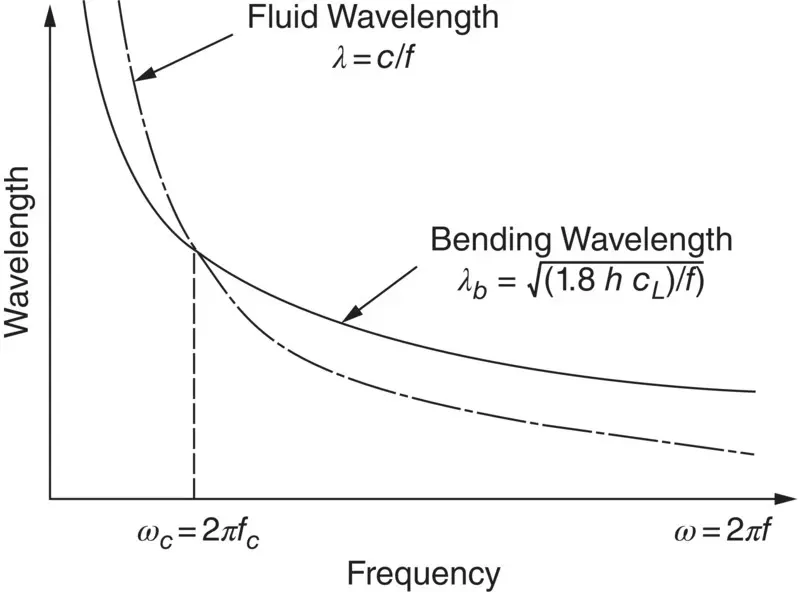
Figure 3.25 Variation with frequency of bending wavelength λ bon a beam or panel and wavelength in air λ .
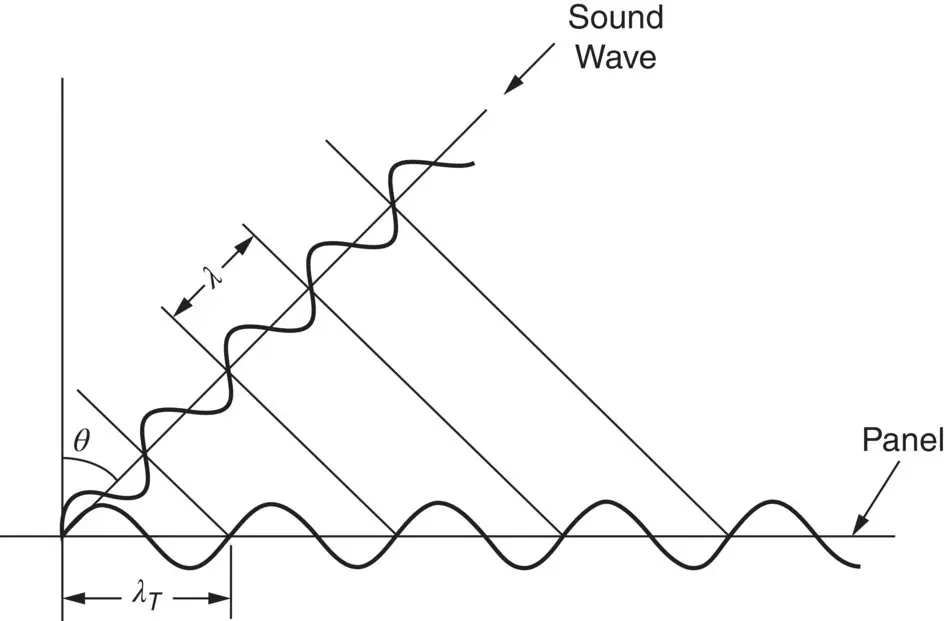
Figure 3.26 Diagram showing trace wave matching between waves in air of wavelength λ and waves in panel of trace wavelength λ T.
For free‐bending waves on infinite plates above the critical frequency, the plate radiates efficiently, while below this frequency (theoretically) the plate cannot radiate any sound energy at all [27]. For finite plates, reflection of the bending waves at the edges of the plates causes standing waves that allow radiation (although inefficient) from the plate corners or edges even below the critical frequency. In the plate center, radiation from adjacent quarter‐wave areas cancels. But radiation from the plate corners and edges, which are normally separated sufficiently in acoustic wavelengths, does not cancel. At very low frequency, sound is radiated mostly by corner modes, then up to the critical frequency, mostly by edge modes. Above the critical frequency the radiation is caused by surface modes with which the whole plate radiates efficiently (see Figure 3.27). Radiation from bending waves in plates and cylinders is discussed in detail in Refs. [9, 27] and chapter 10 of the Handbook of Acoustics [1]. Figure 3.28shows some comparisons between theory and experiment for the level of the radiation efficiencies for sound radiation for several practical cases of simply-supported and clamped panel structures with acoustical and point mechanical excitation.
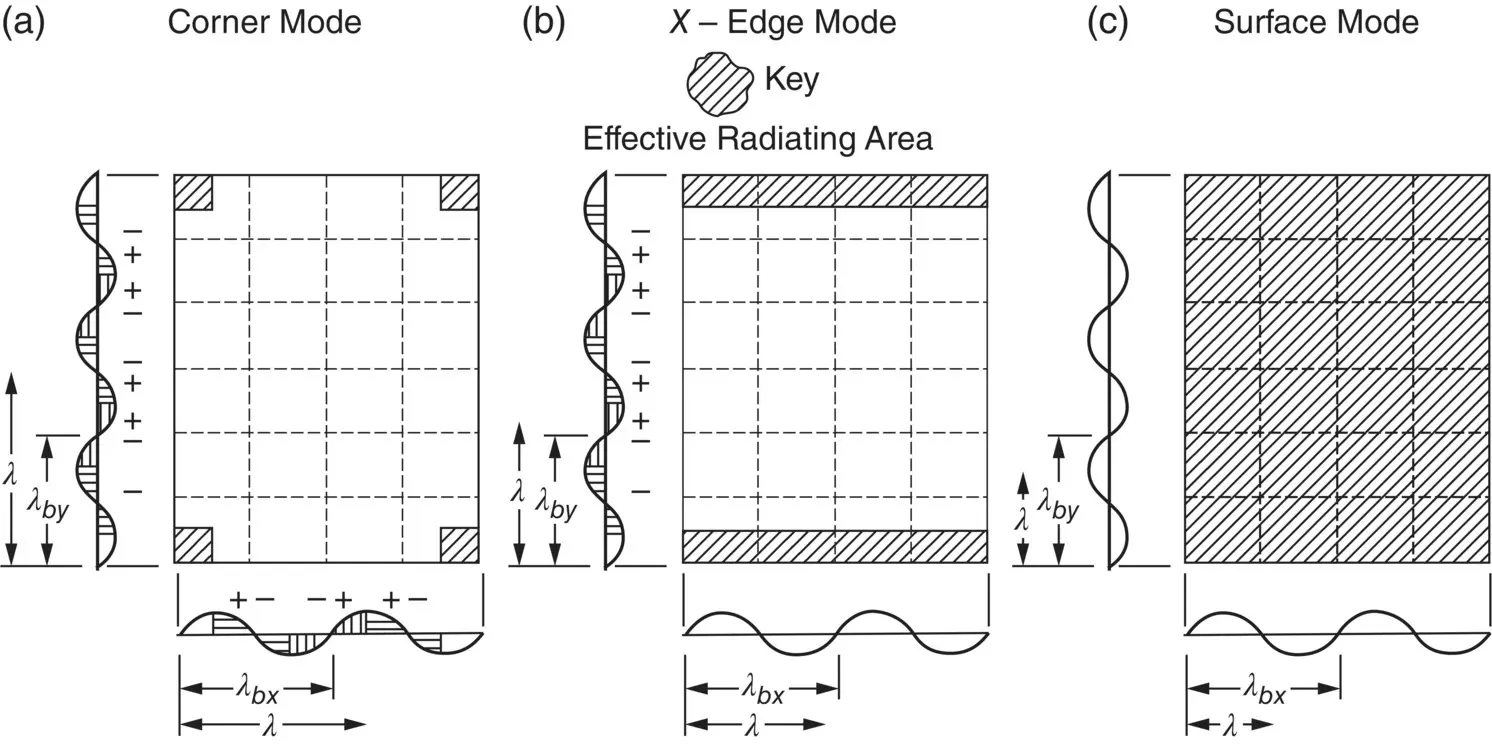
Figure 3.27 Wavelength relations and effective radiating areas for corner, edge, and surface modes. The acoustic wavelength is λ ; while λ bxand λ byare the bending wavelengths in the x‐ and y‐ directions, respectively. (see also the Handbook of Acoustics [1], chapter 1.)
Читать дальше
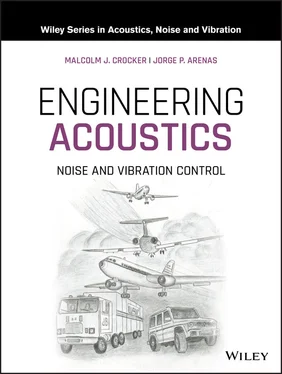





 is sometimes known as the absorption area, m 2(sabins). This may be assumed to be the area of perfect absorbing material, m 2(like the area of a perfect open window that absorbs 100% of the sound energy falling on it). If we consider the sound field in a room with a uniform energy density ε created by a sound source that is suddenly stopped, then the sound pressure level in the room will decrease.
is sometimes known as the absorption area, m 2(sabins). This may be assumed to be the area of perfect absorbing material, m 2(like the area of a perfect open window that absorbs 100% of the sound energy falling on it). If we consider the sound field in a room with a uniform energy density ε created by a sound source that is suddenly stopped, then the sound pressure level in the room will decrease.

















